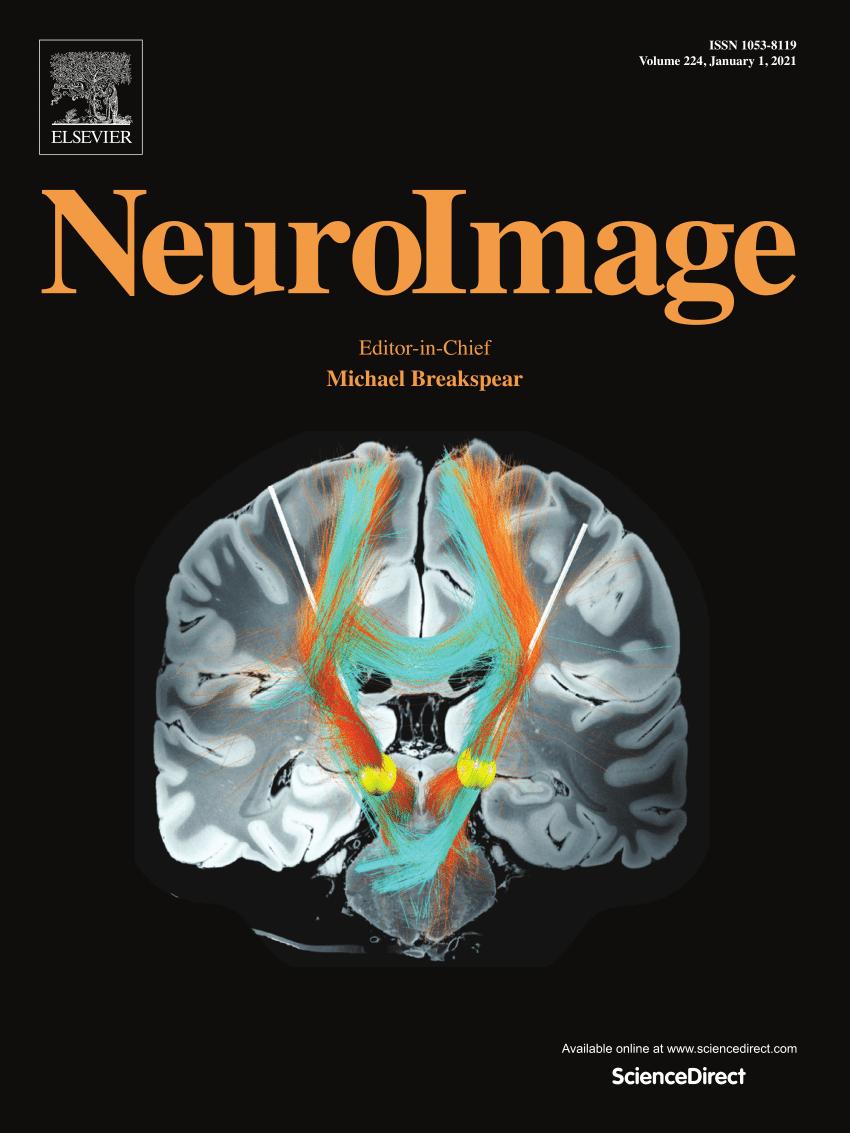振动触觉刺激同化效应的躯体感觉皮层表征。
IF 4.5
2区 医学
Q1 NEUROIMAGING
引用次数: 0
摘要
具体的感觉通路已经被很好地描述了,但相对而言,这些不同的感觉信息流是如何整合在一起以创造对外部环境的连贯表征的,我们所知的相对较少。几种感觉错觉可以帮助揭示这些整合机制。本研究探讨了振动触觉刺激感知中与同化效应相关的神经活动模式。同化效应是指一根手指上的振动触觉频率感知偏向于另一根手指上分散的振动触觉刺激的频率。同化效应不仅发生在同只手的手指之间(交叉手指),也发生在不同手的手指之间(交叉手指)。同化效应的这些行为方面导致了一种假设,即与同化效应相关的神经过程可能涉及整合由体感觉皮层介导的不同触觉信息。我们通过使用功能性磁共振成像(fMRI)研究大脑对振动触觉刺激的反应来解决这一假设,振动触觉刺激在交叉手指和双手条件下诱导同化效应。正如预期的那样,振动触觉刺激激活了初级(S1)和次级(S2)体感皮层。然而,这些局部神经反应与个体间的同化效应不相关。相反,S1与内侧前额叶皮层(mPFC)之间的连通性与个体跨指同化效应相关,S2与下顶叶叶(IPL)之间的连通性与个体跨手同化效应相关。这些结果表明,同化效应可能通过体感皮层与高阶脑区之间的功能连接而与触觉信息整合有关。本文章由计算机程序翻译,如有差异,请以英文原文为准。
Somatosensory cortical representations of the assimilation effect for vibrotactile stimulation
Specific sensory pathways are well-described, but relatively less is known about how these different sensory information streams are integrated to create a coherent representation of the external environment. Several sensory illusions can help reveal these integration mechanisms. This study investigated the neural activity patterns associated with the assimilation effect in the perception of vibrotactile stimuli. The assimilation effect refers to a tactile perceptual bias in which the vibrotactile frequency perception on one finger is biased toward the frequency of a distracting vibrotactile stimulus on a different finger. The assimilation effects occur not only between fingers of the same hand (across-finger) but also between fingers on different hands (across-hand). These behavioral aspects of the assimilation effect led to the assumption that neural processes related to the assimilation effect would involve integrating different tactile information mediated by the somatosensory cortex. We addressed this hypothesis by investigating brain responses using functional magnetic resonance imaging (fMRI) to vibrotactile stimuli that induced the assimilation effect under across-finger and across-hand conditions. As expected, vibrotactile stimuli activated the primary (S1) and secondary (S2) somatosensory cortices. However, these local neural responses did not correlate with the assimilation effect among individuals. Instead, the connectivity between S1 and medial prefrontal cortex (mPFC) was correlated with individual across-finger assimilation effects and connectivity between S2 and inferior parietal lobule (IPL) with individual across-hand assimilation effects. These results suggest that the assimilation effect may be related to tactile information integration via functional connections between the somatosensory cortex and higher-order brain regions.
求助全文
通过发布文献求助,成功后即可免费获取论文全文。
去求助
来源期刊

NeuroImage
医学-核医学
CiteScore
11.30
自引率
10.50%
发文量
809
审稿时长
63 days
期刊介绍:
NeuroImage, a Journal of Brain Function provides a vehicle for communicating important advances in acquiring, analyzing, and modelling neuroimaging data and in applying these techniques to the study of structure-function and brain-behavior relationships. Though the emphasis is on the macroscopic level of human brain organization, meso-and microscopic neuroimaging across all species will be considered if informative for understanding the aforementioned relationships.
 求助内容:
求助内容: 应助结果提醒方式:
应助结果提醒方式:


